Did You Know That … ?
- Li Shi-chiao (李石樵) was an important Taiwanese artist in the Japanese colonial era (1895 - 1945). He was known for his sincere and careful attitude towards painting, philosophical and critical mind, as well as his unique and superbly skillful painting style. He was also a teacherat the National Taiwan Normal University and the National Taiwan Academy of Arts, educating and inspiring quite a few followers who later became excellent artists.
- Li and other seven artists (Chen Deng-po, Li Mei-shu, Yen Shui-long, Yang San-lang, Liao Ji-chun, Chen Ching-fen, and Zhang Wan-chuan) co-founded the Taiyang Art Society (台陽美術學會)and the Taiwan Art Exhibition Association, which contributed significantly to the development of art in Taiwan.
- Li remained engaged in art creation for more than sixty years. With mighty determination and an impregnable spirit, he painted a considerable range of excellent works, which form the most complete collection of western-style paintings in Taiwan at his time. As many as four-hundred-plus oil paintings, water-color paintings, and other related data are now collected in the Li Shi-chiao Museum of Art.
Read about the artist here or scroll down for pictures.
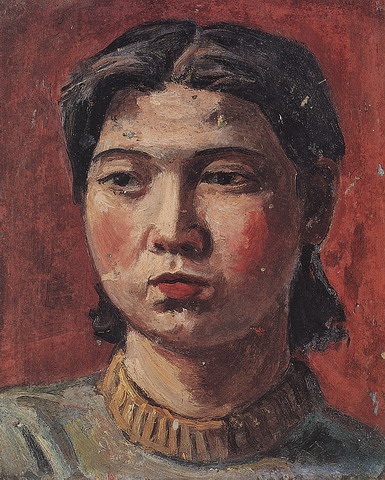
Japanese Girl, 1931 | The "Japanese Girl" was a practice piece Li executed when studying in Japan. At that time, he was not yet adept at using oil paints. Some parts of the face are unnaturally pointy, which are the traces of sketching. The muscles were poorly delineated, as can be seen on the corner of the upper lip, the cheek, and the neck that touches the light. It is shown that Li was a beginner of using oil paints and therefore his sketching skills were not fully brought into play. However, he demonstrates his sensitivity to colors by skillfully applying colors of decent brightness to the background so that they do not distract viewers’ attention from the main subject. The strong contrast between the scarlet background and the green cloth reveals the artist's preference for bright colors.
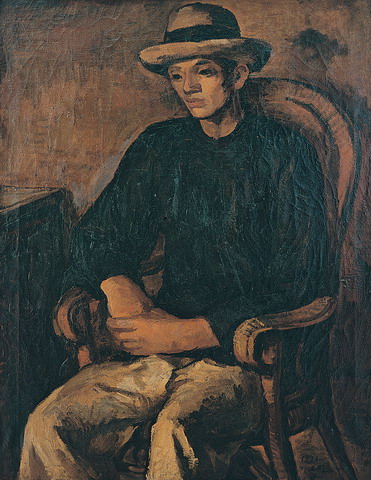
Portrait of the Fourth Younger Brother, 1931 | This painting won the Special Selection at the Fifth Anniversary of the Fine Taiwan Art Exhibition. It portrays the fourth son of the Li family, Li Duiduan, wearing fashionable clothes and a hat when he was to join the Dadaocheng grand worshipping ceremony. One can see Cezanne’s influences on the artist in the painting’s well-balanced composition, dense colors, and vivid delineation of the characteristics of human body.
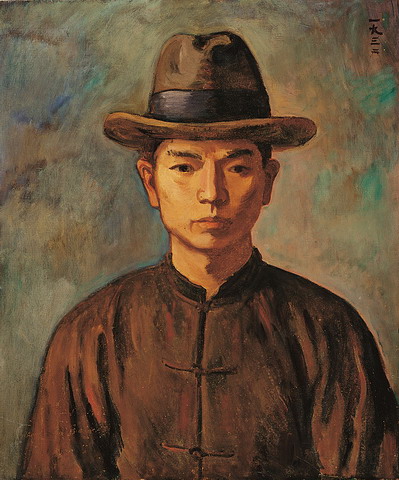
Portrait of the Oldest Brother (with Boy Scout Hat), 1932

Rose Flowers, 1936 | Pink roses stretch their beauty on the canvas. The ceramic vase with colorful peony design and the round wooden table give an air of Chinese elegance.

Mrs. Ye, 1937 | The three-quarter front angle employed in this painting is common in figure painting. The style is realistic. The facial muscles are naturally shown on the plump face. The nose pertinently brings out the facial characteristics of the Chinese people, avoiding the common mistake of imposing a Caucasian nose on an Asian face. The bags under the eyes are appropriately portrayed for a middle-aged woman. The dark blouse is decorated with only a single sparkling brooch. This painting is considered the best figure painting Li created in Taiwan.
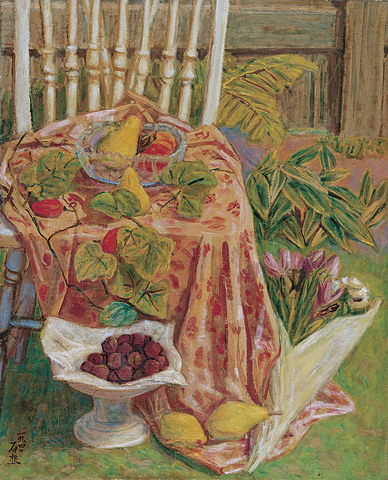
Still Objects, 1940
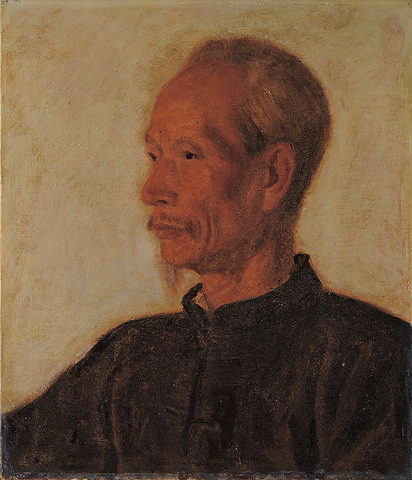
Portrait of Father (in Winter Black Coat), 1942 | This portrait silhouettes Li Shiqiao’s father, dressed in a black winter coat. The strokes are subtle and exquisite, and the colors elegant.
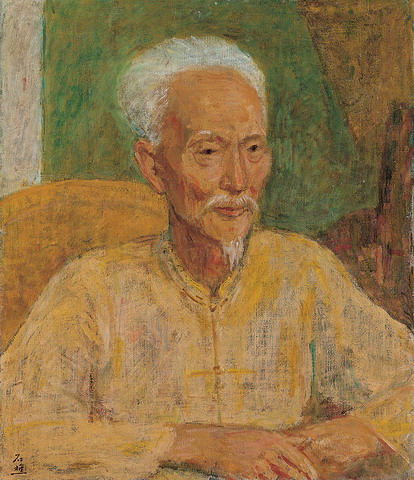
Portrait of Father (in Summer Cloth), 1942 | This painting, realistic in style, best shows Li Shiqiao’s application of colors in figure painting. The dry rub technique [rub the canvas with pigment-loaded cloth] is used to present the texture of the flax linen and show the man’s vivid facial expression. The face and hair were drawn using relaxed and loose strokes to form harmony with the cloth. This person looks quite like Li Shiqiao himself. The slight curve of the chair echoes that of the shoulders, while the straight line of the wall shows a liaison with the button line of the Chinese-style tunic. One can observe the artist's attention to the geometry of objects in this painting.
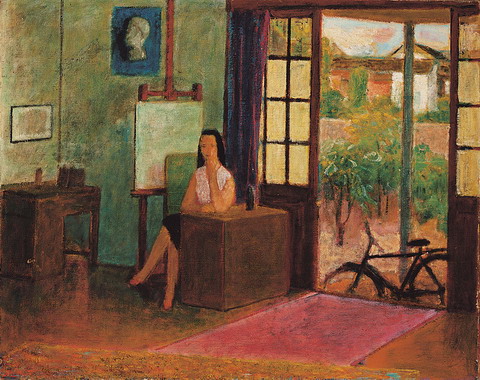
Li Shih-chiao's Studio, 1947 | This painting is a quiet corner of Li's studio against the light. The vibrant greenery outdoor forms contrast with the lady sitting alone in an open room with simple layout. A dim yellow light fills the room with a mysterious atmosphere.
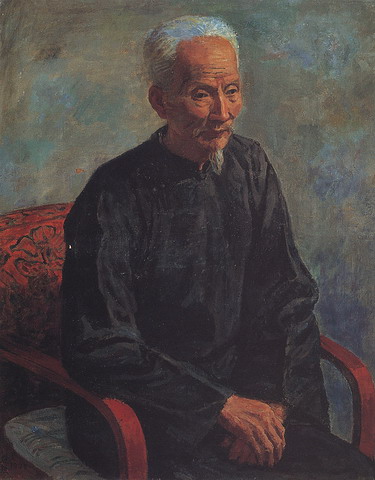
Portrait of Father, 1948 | (Compare and contrast with the Portrait of Mother-in-Law) Li Shiqiao did portraits of his father and mother-in-law, both in realistic style. Similar gestures are shown in these two portraits as both figures sit facing slightly to the right. The way their hands placed is similar, except for which one of the hands is up or down. The drawing of his father’s hands is marvelous, and his face is more natural than his mother-in-law. While this work is realistic, it exhibits rich colors. In the Portrait of Mother-in-law, a contrast is made between the red turban and the dark blue cotton-padded coat; in the Portrait of Father, the red chair contrasts with the dark blue tunic suit. The contrasts not only add to the colorfulness of both paintings but the texture of the clothes is intensified. The simple background is enhanced by subtle changes in hue, save that in the Portrait of Mother-in-law the colors show distinct patches of brushstrokes.
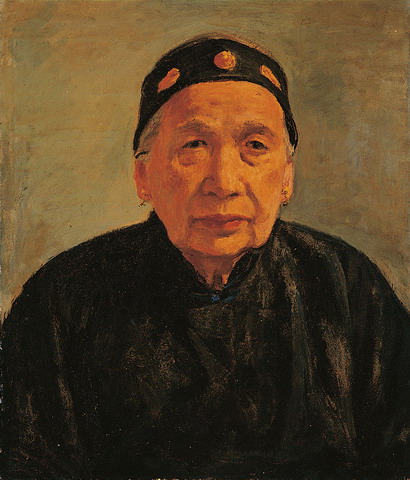
Portrait of Mother, 1948 | Portrait of Li Shiqiao's mother in black cloth, her face solemn
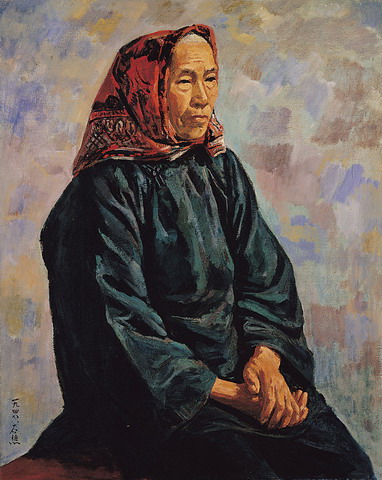
Portrait of Mother-In-Law, 1948 | (Compare and contrast with the Portrait of Father) Li Shiqiao did portraits of his father and mother-in-law, both in realistic style. Similar gestures are shown in these two portraits as both figures sit facing slightly to the right. The way their hands placed is similar, except for which one of the hands is up or down. The drawing of his father’s hands is marvelous, and his face is more natural than his mother-in-law. While this work is realistic, it exhibits rich colors. In the Portrait of Mother-in-law, a contrast is made between the red turban and the dark blue cotton-padded coat; in the Portrait of Father, the red chair contrasts with the dark blue tunic suit. The contrasts not only add to the colorfulness of both paintings but the texture of the clothes is intensified. The simple background is enhanced by subtle changes in hue, save that in the Portrait of Mother-in-law the colors show distinct patches of brushstrokes.
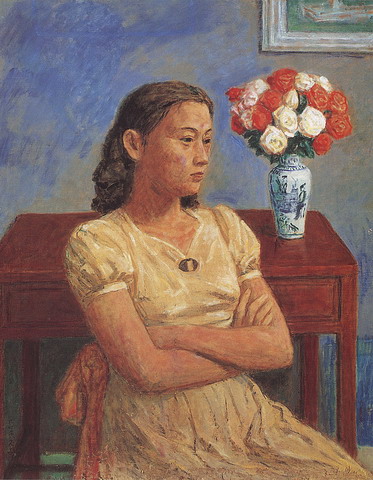
Portrait, 1949 | Breaking away from the realistic style in Construction, the artist embraced in this painting a style near to classism, one much like the Picasso’s. This painting is quite stylized; the folded arms fit well with the torso. The ivory color of the dress creates an impression of a solid and firm marble sculpture or a plaster figure. However, the desk and the vase in the background, drawn in realistic style, are not in congruousness with this stylized main subject. This painting marks a change in Li's painting style.